SPLACE Gallery
LICHTenegger, MEYER and JOST: Light, Shapes and Numbers
&
"John A. Hiigli" Children and Youth Math-Art Exhibit by Experience Workshop
The SPLACE Gallery of the Art University Linz presents two special exhibitions and programs at the Bridges conference 2019. The "Light, Shapes and Numbers" exhibit is featuring the following three artists: BARBARA LICHTenegger, GABRIELE E. MEYER and EUGEN JOST. This exhibit combines artistic, mathematical and technological topics. The "John A. Hiigli" Children and Youth Math-Art Exhibit by Experience Workshop is introducing more than 500 math-artworks made by children from all around the world.
Explore the artists and their works!
Opening hours, special programs and address
July 17 (Wednesday): 15:00 - 19:00
July 18 (Thursday): 15:00 - 19:00
July 19 (Friday): 08:30 - 19:00. Special program, 14:00-19:00: Bridges Family Day Workshop AFRICAN ART SHAPES by Catherina Steyn (Nelson Mandela University, South Africa), more info: www.familyday.hu
July 20 (Saturday): 08:30 - 19:00. Special program, 10:00 – 18:00: Experience Workshop’s STEAM-
SPLACE-4-Kids. Various math-art workshops and activities for children above the age of 3.
Address:
SPLACE Gallery, Kunstuniversität Linz,
Hauptplatz 6, 4020 Linz Austria (Map)
BARBARA LICHTenegger presents both oil and light paintings that are building bridges between traditional techniques and the new technology of 3D printing.
GABRIELE MEYER’s work focuses on light and shadow, to form shapes, solid surfaces and holes. Details of the artwork emerge fully when light shines at and through the different textures of the art piece allowing impressive effects to arise. The exhibition is complemented by digital prints created by EUGEN JOST based on his project “Everything is Number”.
BARBARA LICHTenegger, Artist Statement
LIGHT PAINTINGS: Oil Meets 3D Printing
My name is BARBARA LICHTenegger and I intensively deal with light in the artworks shown (Licht: German for light).
In this SPLACE gallery, I exhibit both oil and light paintings that I created in the past few years. I present different landscapes and portraits taking into account artistic considerations such as temperature (warm and cool colors) and contrasts. As an artist with plein air and studio practice, I also emphasize the importance of value relationships in defining lightness and darkness within a composition.
My aim is to capture a second version of the original motif in an oil painting complementing the already existing first version and definitely not to copy a photograph.
In a project, I even created a third version of the original motif characterized as light painting, using mathematical considerations and supported by technology. Here, I display lithophanes transforming the original oil paintings into 3D models that are 3D printed. The darker colors are represented with the thicker parts of the plane. In contrast, the lighter tones are printed with the thinnest layers allowing the light to shine through it.
In these pieces, light contributes in a natural and unique way, similar to experiences in plein air. The light parts are only visible because of the existence of light that shines through the translucent plane.
My goal is to follow the Impressionists’ intention to depict the environment with novel approaches by applying the latest technologies and mathematical strategies to become an innovative artist in our world.
Website: https://barbaralicht.com
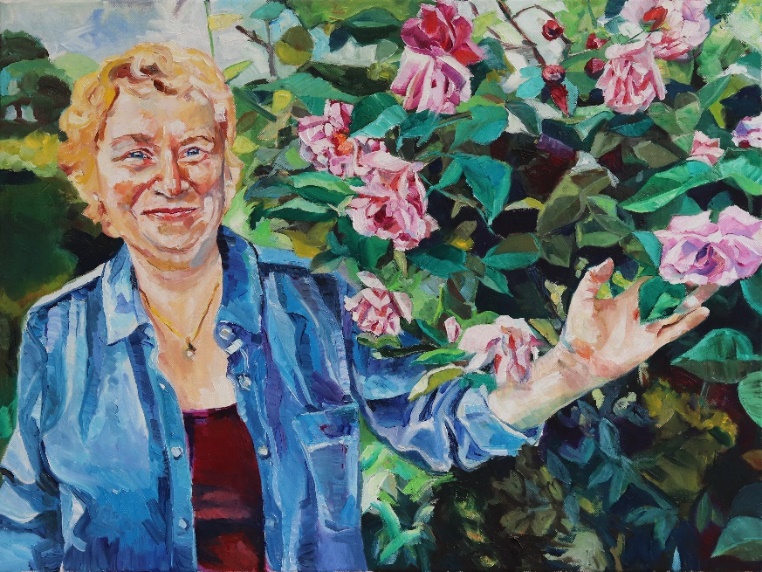 Figure: Original oil painting, 2015, oil on canvas, 60 x 80 cm
Figure: Original oil painting, 2015, oil on canvas, 60 x 80 cm
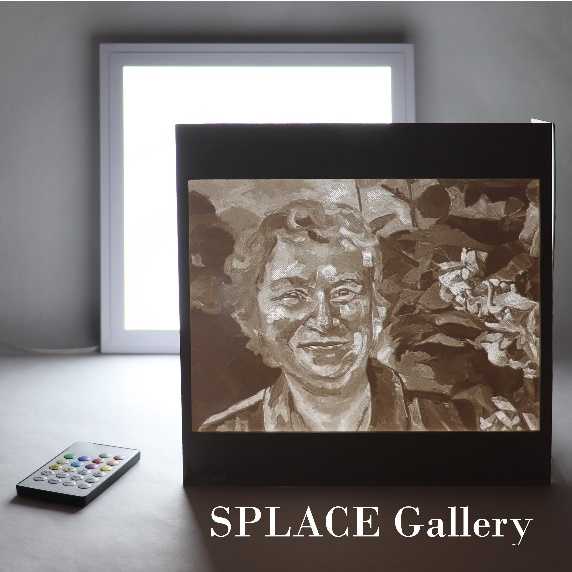
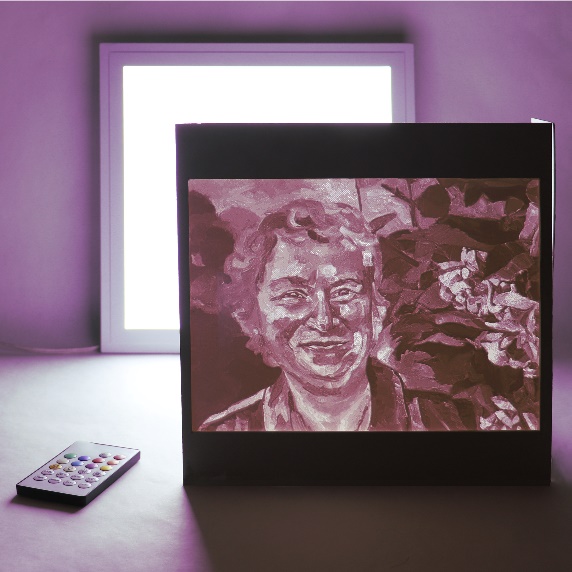
Figure: Light painting, backlighted with different colors
Another light painting at the exhibition at Johannes Kepler University:
http://gallery.bridgesmathart.org/exhibitions/2019-bridges-conference/barbara-lichtenegger
GABRIELE E. MEYER, Artist Statement
 Figure: White and Yellow Blossom: 83cm x 49cm x 49 cm, 500g
Figure: White and Yellow Blossom: 83cm x 49cm x 49 cm, 500g
Mathematical shapes, the shadows they throw, the shadows that are formed on them, have always fascinated me greatly. Sometimes you can find such shapes in nature, in sea creatures such as shells, snails and algae and also in some leaves. So first I tried to paint and linoprint images of them. Now I create them via crocheting. I found a new technique, whereby I crochet around shaped plastic line. This makes the crocheted surface hold its curved shape. It is an intermediate technique between crocheting and basket making. This work was inspired by works of Daina Taimina and Eva Hild.
Using different crocheting techniques one can create solid surfaces or those with holes. Light shining at these different textures can create beautiful effects.
It is the hyperbolic shapes that create these beautiful light and shadow effects. A surface is hyperbolic if and only if around any point the surface will look locally like a saddle. This makes the hyperbolic surface very different from a flat or a spherical one: a flat surface looks like a piece of paper everywhere. A spherical surface looks locally curved like the earth. The hyperbolic plane comes in two views, one as a disk with wavy perimeter, and the other one as a long band with waviness on one side. I crochet both.
After seeing them created by computer graphics, it's been an amazing experience to be able to make these shapes come into being. Over the course of years, I have made
- hyperbolic disks, which look like convoluted balls
- blossoms, which have a long stem and flare open at one end like a trumpet
- long algae type surfaces, looking like sea plants, with wavy perimeters
- flat disks with wavy perimeters, which got me into lamp shades, this can also be done for irregular shaped flat surfaces
- Riemann surfaces, which are studied in mathematics
- lamp shades with hyperbolic rib attachments
Each one of these pieces takes a long time to complete, weeks to months, depending on size and complexity.
EUGEN JOST, Artist Statement
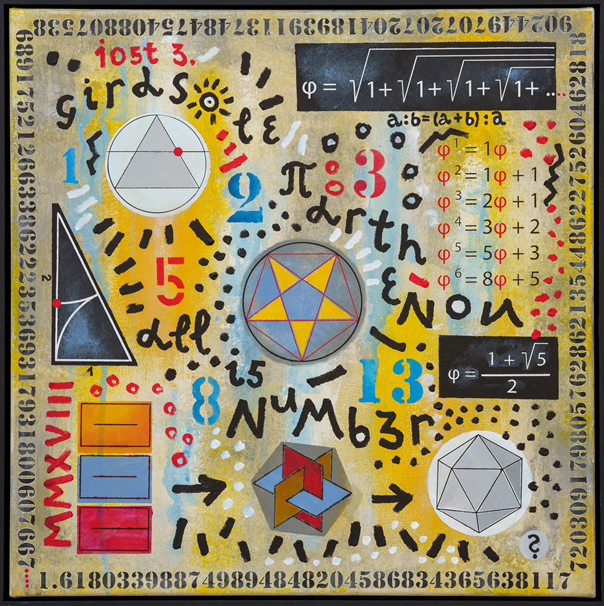 Figure: Phi, Acrylic on Canvas, 60cm x 60cm
Figure: Phi, Acrylic on Canvas, 60cm x 60cm
Eugen Jost is a Swiss artist, born in Zürich, whose work is strongly influenced by mathematics.
He started his career in a technical direction: after taking an apprenticeship with Siemens-Albis Telecommunications and working as a technical designer at Bobst et fils in Lausanne, he went on to Teacher Training College in Bern, later becoming a teacher and an instructor in Matten/Interlaken and Spiez.
For the past 25 years, he has studied and worked in the field of art, particularly pottery, sculpture, and painting. He likes to experiment with signs and numbers, letters and characters, and his preferred techniques and materials are currently acrylic colours and computer graphic. His artworks and illustrations can be also found in numerous books.
Together with Peter Baptist and Carsten Miller of the University of Bayreuth he has launched the project “Everything is Number”. It resulted in art calendars, books and in an exhibition that was shown in many European Cities.
"My entire artistic life revolves around patterns, numbers, and forms. I love to play with them, interpret them, seeing in them hidden messages, and metamorphose them in endless variations. My motto is the Pythagorean motto: Alles ist Zahl ("Everything is number"); it was the title of an earlier project I worked on with my good friend Peter Baptist, University of Bayreuth, back in 2008.
"I like to call my pictures playgrounds, following a statement by the Swiss Artist Max Bill: Perhaps the goal of concrete art is to develop objects for mental use, just like people created objects for material use.
"Many of my pictures are acrylics on canvas; others are computer graphics. While working on the latter my mind often is with Euclid: A point is that which has no part, a line is a breathless length. Notwithstanding that claim, Archimedes drew his broad-lined circles with his finger in the sand of Syracuse. Nowadays it is much easier to meet Euclid’s demands: with a few clicks of the mouse you can reduce the width of line to nothing – in the end there remains only a path, a so-called vector graphic that has no width."
The "John A. Hiigli" Children and Youth Math-Art Exhibit
Curated by Kristóf Fenyvesi, Catherina Steyn, Werner Olivier, Christopher Brownell & Zsolt Lavicza
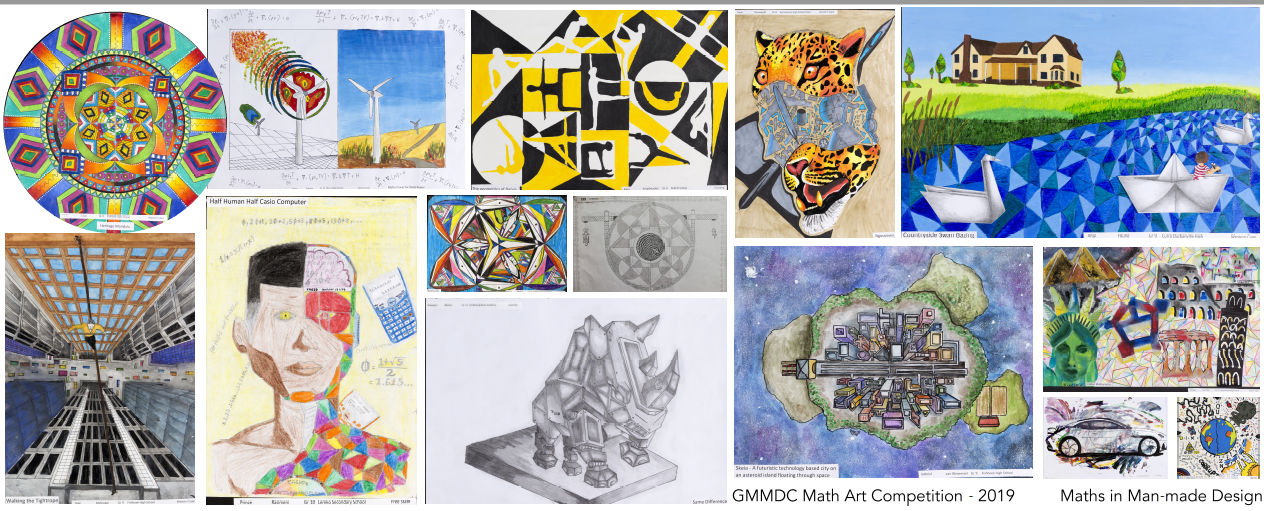
Since 2012, the Bridges Organization has hosted mathematics and arts exhibitions, which present children and youth artworks as well. The artworks are inspired by the children and youth artists' own understanding, experimentation and research on connections between mathematics and the arts. The Bridges Children and Youth Math-Art Exhibits were originally initiated by John A. Hiigli (1943-2017), painter and educator, and the founder of the Jardin Children's Art Galerie in New York (http://jardingalerie.org/). Currently, the growing collection is facilitated and maintained by Kristóf Fenyvesi, together with several of his colleagues from the Experience Workshop International STEAM Movement (www.experienceworkshop.org).
In the SPLACE Gallery we present the screened exhibition of more than 500 children and youth mathematical artworks collected all around the world and our "special guests" are 12 original pieces from South African secondary school learners who entered the GMMDC National Math Art Competition. The categories in the competition were: Math in Nature and Math is Manmade Designs. The learners portrayed these categories creatively and included many truly South African cultural design elements and issues.
